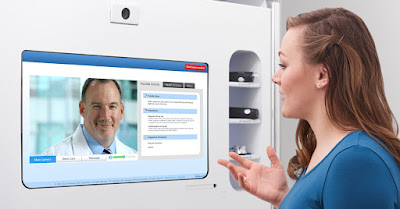The concept of telemedicine is
relatively new in the tech-savvy environment that is developing with lightning
speed. Telemedicine can be defined as a tool that establishes a series of
connections to facilitate long-distance access to healthcare facilities for
patients, thereby improving the quality of care.
It involves the application of
technology like wireless and terrestrial communication, the internet, chatbots,
video conferencing, digital channels and other streaming media. The ultimate
goal is to establish a connecting link between doctors and patients without the
need for any face-to-face meetings. It aims to optimize the health system
performance in three ways –
·
- Better health care for individuals
- Improved health care for the population
- Lower per capital cost
Different Types of Telemedicine Healthcare
The remote delivery of healthcare
services are of three types, which include but are not limited to –
- Remote Patient Monitoring: This allows doctors residing at remote locations to monitor patients residing at their own homes through the use of mobile medical devices for collecting data, such as blood pressure and blood sugar.
- Interactive Medicine: This allows physicians and patients to communicate in real-time while maintaining compliance with HIPAA.
- Store and Forward: This allows service providers to share patient information and data with a practitioner located in a different location than the patient.
Setting up of Telemedicine service
The procedure of integrating
telemedicine service into an individual practice can be either simple or
complex depending on the type of service to be offered. For individual clinics
and solo practitioners, just a basic HIPAA compliant video conference software
will be sufficient for providing telemedicine consultation.
For service providers planning to
set up a complete virtual clinic, service needs to consider their existing
workflow and incorporate the application of telemedicine into their practice. Such
as, they need to set up an appropriate payment function, and a waiting room.
On the other hand, hospitals and
large medical groups need to go through a more complex procedure to implement
custom telehealth services into their existing workflow to minimize the disruption caused by adopting telemedicine into their services.
Besides the software requirement,
providers are also advised to conduct due diligence on the regulations of
telehealth and also consider the reimbursement policy of their state or country.
Organizations will need to change
operationally and gather adequate knowledge of the legalities, regulations, and
technological aspects for successfully implementing telemedicine. Many
providers and large organizations partner with telemedicine New York companies to make the transition and
implementation process much easier.
Challenges to Healthcare services
Although Telemedicine New York is progressing in leaps and bounds, the service is limited to
primary care as physicians are more inclined to offer services in the urban
areas where the patient pool is broader. Alongside, small communities find it
difficult to attract and retain primary care providers. Programs like college
loan forgiveness to young physicians you practice in rural communities look for
alternate areas of service once the loan is repaid.
In areas where healthcare
interactions are minimum, patients tend to forego regular checkups and often
face delays in visiting specialists to address their health issues. In such
situations, Telemedicine plays a significant role in serving the rural
population and providing access to the latest healthcare facilities. However, the
cost of such primary care service through the telemedicine system can be offset
with proper care on time.

No comments:
Post a Comment